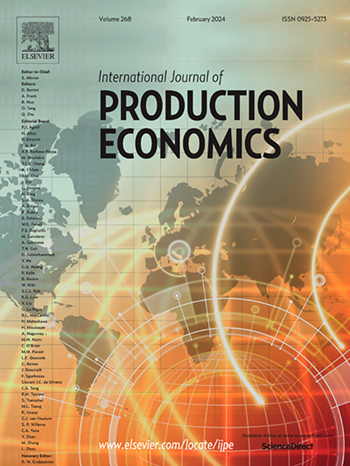数字平台上参与者参与和价值共创的共同演变
IF 9.8
1区 工程技术
Q1 ENGINEERING, INDUSTRIAL
引用次数: 0
摘要
越来越多的数字平台将供应商、客户和其他生态系统各方连接起来,促进了各种平台即服务(PaaS)产品的推出。本研究探讨了行动者参与(AE)和价值共创(VCC)的共同演变,前者反映了行动者在互动中投入资源的倾向,后者则通过互惠的资源整合体现出来。重点是资产管理行业的 PaaS 计划。通过比较案例研究法,我们分析了两种金融科技产生的 PaaS 产品:免费模式和基于订阅的模式。我们的研究结果揭示了在 AE 和 VCC 相互作用的推动下,平台开发和扩展的不同途径。免费模式促进了一种 "病毒式 "的社区建设路径,早期的 VCC 成为 AE-VCC 共同发展的引擎。相反,订阅模式遵循的是 "受控 "生态系统建设路径,由 AE 推动这一进程。我们观察到更多生态系统合作伙伴的逐步参与,导致解决方案升级、PaaS 产品扩展和平台升级。我们确定了影响这些动态的关键因素,包括商业模式特征、参与者角色和反馈回路。我们的研究通过强调整合 AE 和 VCC 实践对提高平台利用率和可扩展性的重要性,为有关数字服务化和平台生态系统的文献做出了贡献。我们提出了一个框架和研究建议,以指导未来关于复杂、制度化行业 PaaS 开发的研究。这些见解还为旨在实施有效 PaaS 战略和促进金融服务领域创新的管理者提供了启示。本文章由计算机程序翻译,如有差异,请以英文原文为准。
The co-evolution of actor engagement and value co-creation on digital platforms
Increasingly, digital platforms connect suppliers, customers, and other ecosystem parties, facilitating the introduction of various Platform-as-a-Service (PaaS) offerings. This study examines the co-evolution of actor engagement (AE), reflecting actors’ dispositions to invest resources in interactions, and value co-creation (VCC), demonstrated through reciprocal resource integration. The focus is on PaaS initiatives in the asset management industry. Using a comparative case study approach, we analyze two fintech-generated PaaS offerings: a freemium model and a subscription-based model. Our findings reveal distinct pathways for platform development and scaling, driven by the interplay between AE and VCC. The freemium model fosters a “viral” community-building path, where early VCC serves as the engine for AE-VCC co-evolution. Conversely, the subscription model follows a “controlled” ecosystem-building path, with AE driving the process. We observe a gradual involvement of additional ecosystem partners, leading to upgraded solutions, expanded PaaS offerings, and platform upscaling. We identify key factors influencing these dynamics, including business model characteristics, actor roles, and feedback loops. Our study contributes to the literature on digital servitization and platform ecosystems by highlighting the importance of integrating AE and VCC practices to enhance platform utilization and scalability. We propose a framework and research propositions to guide future studies on PaaS development in complex, institutionalized industries. These insights also provide implications for managers aiming to implement effective PaaS strategies and foster innovation in the financial services sector.
求助全文
通过发布文献求助,成功后即可免费获取论文全文。
去求助
来源期刊
CiteScore
21.40
自引率
7.50%
发文量
266
审稿时长
52 days
期刊介绍:
The International Journal of Production Economics focuses on the interface between engineering and management. It covers all aspects of manufacturing and process industries, as well as production in general. The journal is interdisciplinary, considering activities throughout the product life cycle and material flow cycle. It aims to disseminate knowledge for improving industrial practice and strengthening the theoretical base for decision making. The journal serves as a forum for exchanging ideas and presenting new developments in theory and application, combining academic standards with practical value for industrial applications.

 求助内容:
求助内容: 应助结果提醒方式:
应助结果提醒方式:


